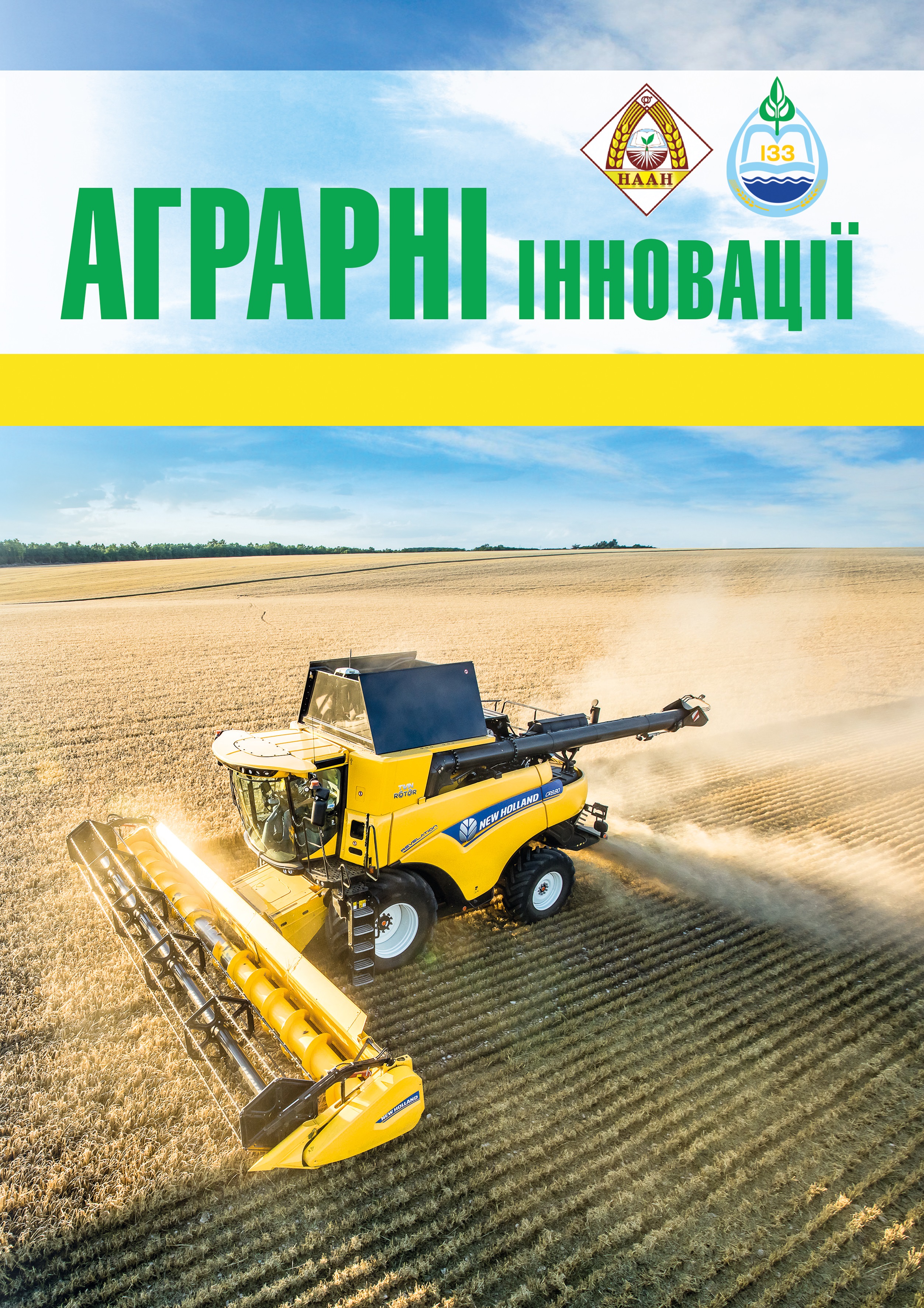DIRECTIONS OF ADAPTATION TO CLIMATE CHANGE TECHNOLOGIES FOR GROWING CORN ON IRRIGATED LANDS IN THE SOUTHERN UKRAINE
Abstract
Purpose. The aim is to scientifically substantiate the intensive technologies of growing corn grain on the irrigated lands of the Southern Steppe of Ukraine, taking into account hydrothermal factors and climate change. Methods. The starting materials for modeling and forecasting were experimental data of field experiments with corn in he research areas of the Institute of Irrigated Agriculture NAAS for the period 1970–2018. Agricultural techniques for growing corn in experiments were generally accepted for the irrigation zone of southern Ukraine. Research in this area has been conducted using special techniques for the use of information technology in agriculture. Results. According to the results of generalization of long-term data it is inserted that the maximum grain yield of maize hybrids of different maturity groups is formed in wet years, and the lowest – in dry years, and plants make best use of heat potential of the Southern Ukraine in wet and medium wet years. Using the obtained regression equations, it is possible to select the most optimal hybrid composition for regional and local agroclimatic conditions of the Southern Steppe of Ukraine. Conclusions. Different degrees of variability of meteorological and agronomic indicators have been established. Statistical analysis of yield data of different precocity hybrids of maize and thermal energy indicators allowed to establish different degrees and direction of the relationship between plant productivity in the differentiation of natural moisture conditions in the years of research. With the help of the created correlation-regression dependences it is possible to model the yield level of different precocity maize hybrids according to the actual indicators of the sum of air temperatures and the receipt of photosynthetically active radiation during the growing season of plants.
References
2. Яблоков А.В. Популяционная биология. Москва : Высшая школа, 1987. 303 с.
3. Писаренко В.А., Коковіхін С.В., Мішукова Л.С., Писаренко П.В. Методичні вказівки по застосуванню розрахункового методу визначення строків поливу сіль-ськогосподарських культур за показниками середньодо-бового випаровування. Херсон : Колос, 2005. 16 с.
4. Григоров М.С. Водосберегающие технологии выращивания с.-г. культур. Волгоград : ВГСХА, 2001. 169 c.
5. Ничипорович А.А. Энергетическая эффектив-ность и продуктивность фотосинтезирующих систем как интегральная проблема. Физиология растений. 1978. Т. 25. Вып. 5. С. 922–937.
6. Лисогоров К.С., Писаренко В.А. Наукові основи використання зрошуваних земель у степовому регіоні на засадах інтегрального управління природними і тех-нологічними процесами. Таврійський науковий вісник. 2007. Вип. 49. С. 49–52.
7. Коковіхін С.В. Електронно-інформаційний довід-ник ЕІД «Agromet» : методичні рекомендації. Херсон : ІЗЗ НААН, 2009. 16 с.
8. Писаренко В.А., Мішукова Л.С., Коковіхін С.В., Присяжний Ю.І. Ефективність різних схем режимів зро-шення в умовах Південного Степу України. Зрошуване землеробство. 2008. Вип. 50. С. 31–37.
9. Погода в Херсоне. Архив погоды на метеостан-ции. URL: https://rp5.ua/%D0%9F%D0%BE%D0%B3%D0 %BE%D0%B4%D0%B0_%D0%B2_%D0%A5%D0%B5%D1%80%D1%81%D0%BE%D0%BD%D0%B5 (дата звер-нення: 07.02.2020).
10. Ушкаренко В.О., Нікішенко В.Л., Голобо-родько С.П., Коковіхін С.В. Дисперсійний і кореляцій-ний аналіз у землеробстві та рослинництві : навч. посіб. Херсон : Айлант, 2008. 272 с.






